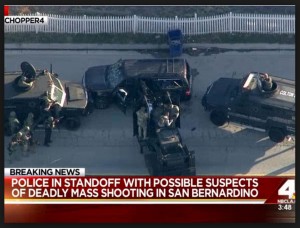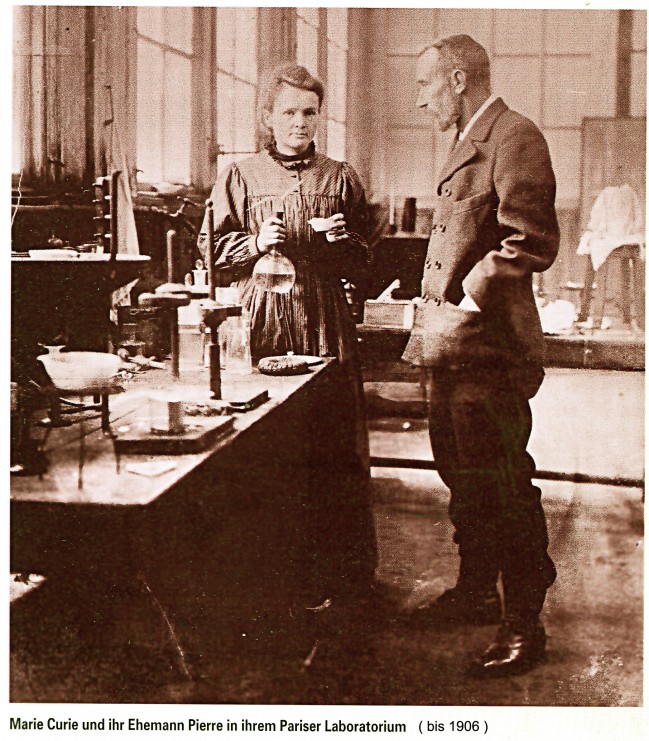What turns a seemingly ordinary person (usually male) into a brutal killer or mass-murderer? How does a quiet computer engineer end up as a cold-blooded executioner of innocents on a terrorist video in 2015? Why does one single guard in a concentration camp lead hundreds of thousands to their deaths during the Second World War? Why do we humans perform acts of such unspeakable brutality and horror?
Since the social sciences have existed researchers have weighed these questions. Is it possible that those who commit such acts of evil are host to a disease of the brain? Some have dubbed this Syndrome E, where E stands for evil. Others are not convinced that evil is a neurological condition with biochemical underpinnings. And so the debate, and the violence, rages on.
From the New Scientist:
…
The idea that a civilised human being might be capable of barbaric acts is so alien that we often blame our animal instincts – the older, “primitive” areas of the brain taking over and subverting their more rational counterparts. But fresh thinking turns this long-standing explanation on its head. It suggests that people perform brutal acts because the “higher”, more evolved, brain overreaches. The set of brain changes involved has been dubbed Syndrome E – with E standing for evil.
In a world where ideological killings are rife, new insights into this problem are sorely needed. But reframing evil as a disease is controversial. Some believe it could provide justification for heinous acts or hand extreme organisations a recipe for radicalising more young people. Others argue that it denies the reality that we all have the potential for evil within us. Proponents, however, say that if evil really is a pathology, then society ought to try to diagnose susceptible individuals and reduce contagion. And if we can do that, perhaps we can put radicalisation into reverse, too.
Following the second world war, the behaviour of guards in Nazi concentration camps became the subject of study, with some researchers seeing them as willing, ideologically driven executioners, others as mindlessly obeying orders. The debate was reignited in the mid-1990s in the wake of the Rwandan genocide and the Srebrenica massacre in Bosnia. In 1996, The Lancet carried an editorial pointing out that no one was addressing evil from a biological point of view. Neurosurgeon Itzhak Fried, at the University of California, Los Angeles, decided to rise to the challenge.
In a paper published in 1997, he argued that the transformation of non-violent individuals into repetitive killers is characterised by a set of symptoms that suggests a common condition, which he called Syndrome E (see “Seven symptoms of evil“). He suggested that this is the result of “cognitive fracture”, which occurs when a higher brain region, the prefrontal cortex (PFC) – involved in rational thought and decision-making – stops paying attention to signals from more primitive brain regions and goes into overdrive.
The idea captured people’s imaginations, says Fried, because it suggested that you could start to define and describe this basic flaw in the human condition. “Just as a constellation of symptoms such as fever and a cough may signify pneumonia, defining the constellation of symptoms that signify this syndrome may mean that you could recognise it in the early stages.” But it was a theory in search of evidence. Neuroscience has come a long way since then, so Fried organised a conference in Paris earlier this year to revisit the concept.
At the most fundamental level, understanding why people kill is about understanding decision-making, and neuroscientists at the conference homed in on this. Fried’s theory starts with the assumption that people normally have a natural aversion to harming others. If he is correct, the higher brain overrides this instinct in people with Syndrome E. How might that occur?
Etienne Koechlin at the École Normale Supérieure in Paris was able to throw some empirical light on the matter by looking at people obeying rules that conflict with their own preferences. He put volunteers inside a brain scanner and let them choose between two simple tasks, guided by their past experience of which would be the more financially rewarding (paying 6 euros versus 4). After a while he randomly inserted rule-based trials: now there was a colour code indicating which of the two tasks to choose, and volunteers were told that if they disobeyed they would get no money.
Not surprisingly, they followed the rule, even when it meant that choosing the task they had learned would earn them a lower pay-off in the free-choice trials. But something unexpected happened. Although rule-following should have led to a simpler decision, they took longer over it, as if conflicted. In the brain scans, both the lateral and the medial regions of the PFC lit up. The former is known to be sensitive to rules; the latter receives information from the limbic system, an ancient part of the brain that processes emotional states, so is sensitive to our innate preferences. In other words, when following the rule, people still considered their personal preference, but activity in the lateral PFC overrode it.
Of course, playing for a few euros is far removed from choosing to kill fellow humans. However, Koechlin believes his results show that our instinctive values endure even when the game changes. “Rules do not change values, just behaviours,” he says. He interprets this as showing that it is normal, not pathological, for the higher brain to override signals coming from the primitive brain. If Fried’s idea is correct, this process goes into overdrive in Syndrome E, helping to explain how an ordinary person overcomes their squeamishness to kill. The same neuroscience may underlie famous experiments conducted by the psychologist Stanley Milgram at Yale University in the 1960s, which revealed the extraordinary lengths to which people would go out of obedience to an authority figure – even administering what they thought were lethal electric shocks to strangers.
Fried suggests that people experience a visceral reaction when they kill for the first time, but some rapidly become desensitised. And the primary instinct not to harm may be more easily overcome when people are “just following orders”. In unpublished work, Patrick Haggard at University College London has used brain scans to show that this is enough to make us feel less responsible for our actions. “There is something about being coerced that produces a different experience of agency,” he says, “as if people are subjectively able to distance themselves from this unpleasant event they are causing.”
However, what is striking about many accounts of mass killing, both contemporary and historical, is that the perpetrators often choose to kill even when not under orders to do so. In his book Ordinary Men, the historian Christopher Browning recounts the case of a Nazi unit called reserve police battalion 101. No member of this unit was forced to kill. A small minority did so eagerly from the start, but they may have had psychopathic or sadistic tendencies. However, the vast majority of those who were reluctant to kill soon underwent a transformation, becoming just as ruthless. Browning calls them “routinised” killers: it was as if, once they had decided to kill, it quickly became a habit.
Habits have long been considered unthinking, semi-automatic behaviours in which the higher brain is not involved. That seems to support the idea that the primitive brain is in control when seemingly normal people become killers. But this interpretation is challenged by new research by neuroscientist Ann Graybiel at the Massachusetts Institute of Technology. She studies people with common psychiatric disorders, such as addiction and depression, that lead them to habitually make bad decisions. In high-risk, high-stakes situations, they tend to downplay the cost with respect to the benefit and accept an unhealthy level of risk. Graybiel’s work suggests the higher brain is to blame.
In one set of experiments, her group trained rats to acquire habits – following certain runs through mazes. The researchers then suppressed the activity of neurons in an area of the PFC that blocks signals coming from a primitive part of the brain called the amygdala. The rats immediately changed their running behaviour – the habit had been broken. “The old idea that the cognitive brain doesn’t have evaluative access to that habitual behaviour, that it’s beyond its reach, is false,” says Graybiel. “It has moment-to-moment evaluative control.” That’s exciting, she says, because it suggests a way to treat people with maladaptive habits such as obsessive-compulsive disorder, or even, potentially, Syndrome E.
What made the experiment possible was a technique known as optogenetics, which allows light to regulate the activity of genetically engineered neurons in the rat PFC. That wouldn’t be permissible in humans, but cognitive or behavioural therapies, or drugs, could achieve the same effect. Graybiel believes it might even be possible to stop people deciding to kill in the first place by steering them away from the kind of cost-benefit analysis that led them to, say, blow themselves up on a crowded bus. In separate experiments with risk-taking rats, her team found that optogenetically decreasing activity in another part of the limbic system that communicates with the PFC, the striatum, made the rats more risk-averse: “We can just turn a knob and radically alter their behaviour,” she says.
Read the entire article here.


 The United States lays claim to an amazing number of home-grown inventions that shaped history and became iconic reflections of modern American culture. Thomas Edison’s lightbulb. Eastman’s film camera. Ford’s Model T car. Coca-cola. Big Mac. Microsoft Windows. iPhone. These are just a few of the
The United States lays claim to an amazing number of home-grown inventions that shaped history and became iconic reflections of modern American culture. Thomas Edison’s lightbulb. Eastman’s film camera. Ford’s Model T car. Coca-cola. Big Mac. Microsoft Windows. iPhone. These are just a few of the 







